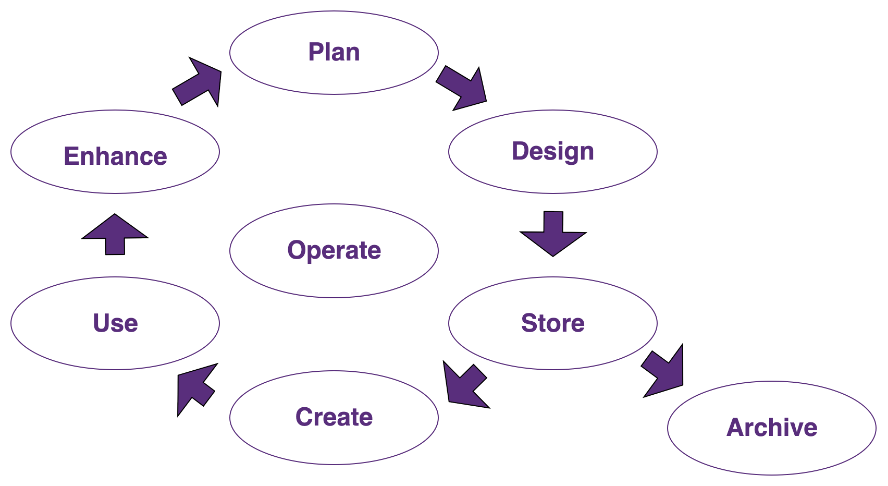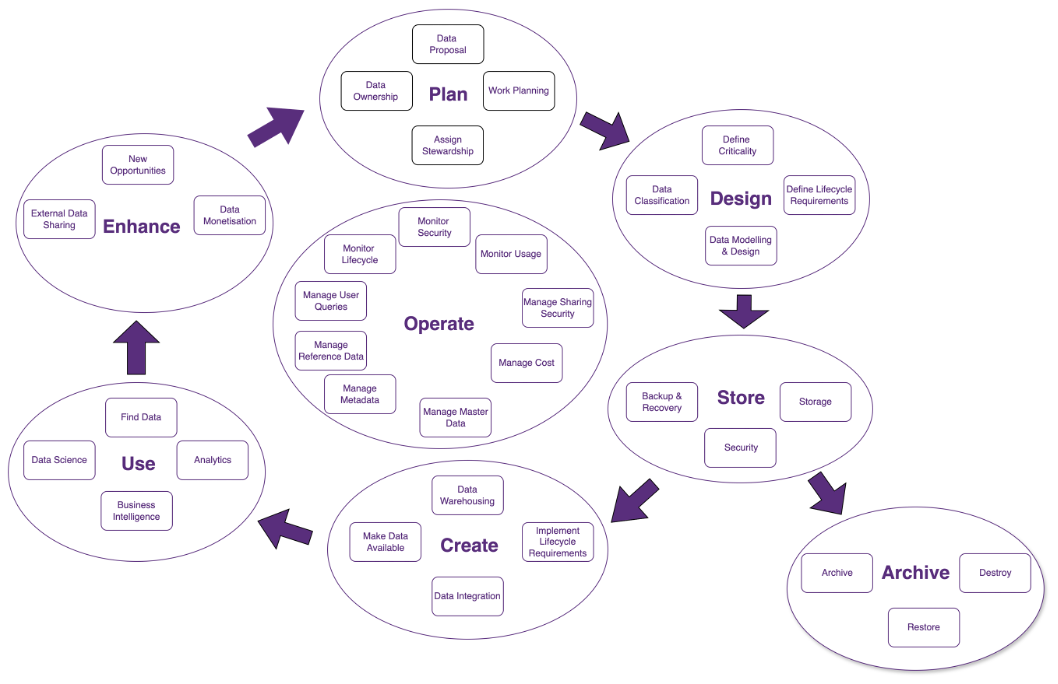Data Lifecycle
CryspIQ supports the DAMA Framework which is considered to be the Global Industry Standard for Data Management. The key concepts and principles are embedded in the solution helps your organisation align to the Industry Standard. During its Life, the Data normally managed to follow a Lifecycle which is very similar to a physical asset, which is shown below

This is slight variation of the Data Lifecycle provided in DMBOK v2 book, p29. The key differences are
- "Maintain" has been replaced by "Operate" and sits in the middle as it has touch points all the way through the Data Lifecycle.
- “Create and Obtain” has been switched around with “Store” as storage is normally set up before the Data starts to arrive.
What is Data?
Long standing definitions of data emphasise its role in representing facts about the World. In technology, Data is information that is stored in a Digital Form. Data is both an interpretation of the object it represents and an object that must be interpreted. Data is the “raw material of information”.
What is Information?
Information is “Data with Context”. We need context for Data to be meaningful. Context can be thought of as a Data’s representational system, such a system includes common vocabulary and a set of relationships between components. For organisations, this means providing answers to the Who, What, Where, When, Why and How questions. This uses the Five W’s and H framework which helps solve business problems or provide insights for an organisation.
Data as an Asset
An asset is defined as an economic resource that can be owned or controlled by an organisation that holds or produces value. Assets are often thought of as property that can be converted into money. It is a struggle to assign a direct monetary figure to a Data to quantify the asset, as it is still very subject.
Deriving value from Data does not happen in a vacuum or by accident. It requires organisational commitment and leadership, as well as management. This is why we need a lifecycle to manage Data which is very similar to managing an Asset. Data provides valuable insights into business operations, customers, assets and services. With the evolving world of AI, managing and governing the Data exposed to AI is of paramount important to any organisation.
Managing Your Data
This is detailed diagram which provides the overarching view of the Data Lifecycle at an Organisation:

It has been developed in accordance with the DAMA which is the industry standard. We have used the principles and concepts from the DMBOK v2 and Navigating the Labyrinth books to derive the framework and provide a practical working enterprise model that can be rolled out any organisation.